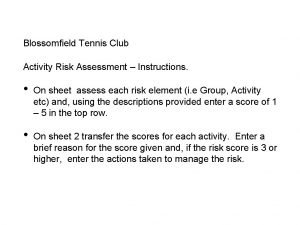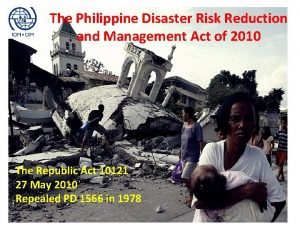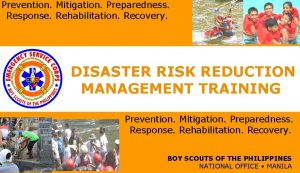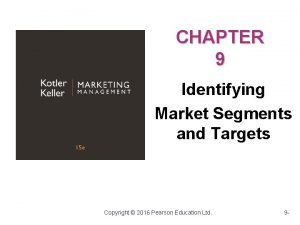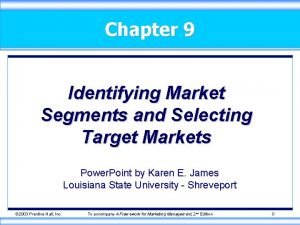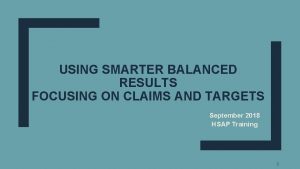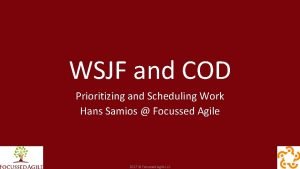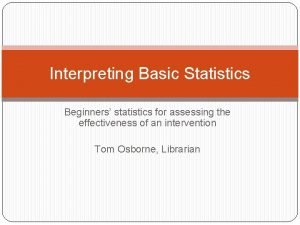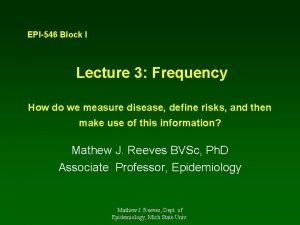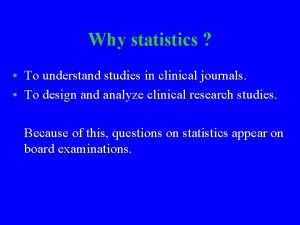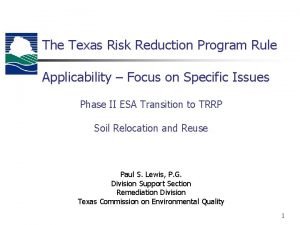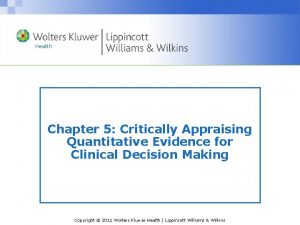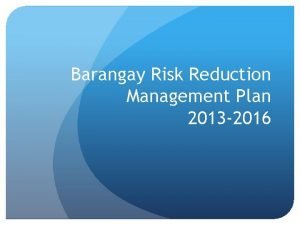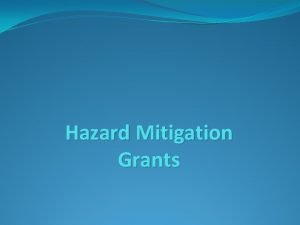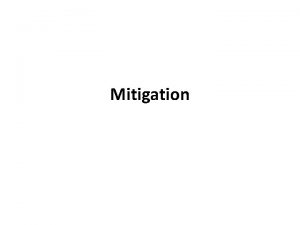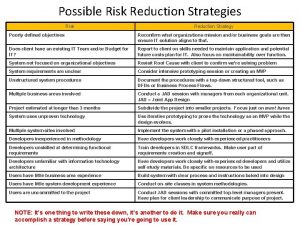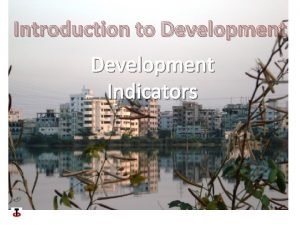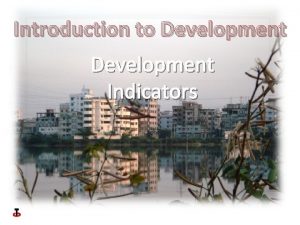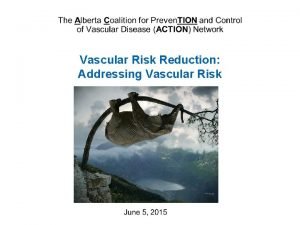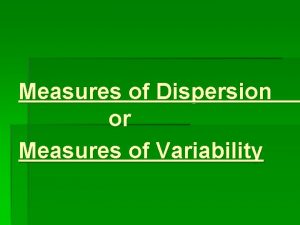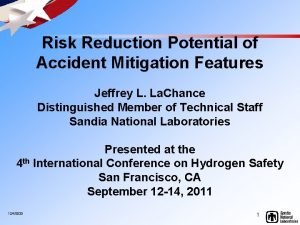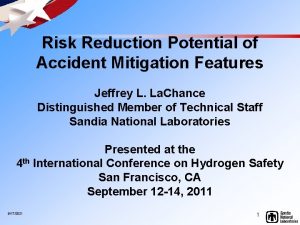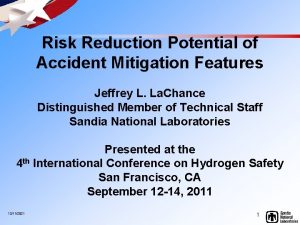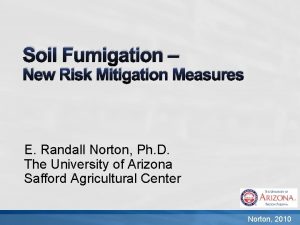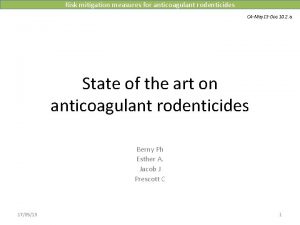Indicators targets and mitigation measures for risk reduction



























- Slides: 27

“Indicators, targets and mitigation measures for risk reduction and IPM” Amalia Kafka OPERA Research Center Scientific Officer Madrid, 2 July 2012

Update on SUD implementation – issues and main topics European Commission forum: “Directive 2009/128/EC on Sustainable use of pesticides”, Brussels, 20 th June 2012 Focus of the discussion: – Integrated Pest Management (IPM) – Risk Indicators (RI)

Update on SUD implementation – issues and main topics EU Expert Meeting on NAP on Sustainable Use of PPP, (Berlin 5 th-6 th June 2012) – – – Training of the farmers Advise on IPM Development and implementation of IPM guidelines Inspection of spraying Water and biodiversity protection • Buffer zones: fixed • Buffer zones: depended on PPP and application equipment • Use of biobeds

IPM implementation in Member States • IPM or special tools, (eg decision support systems, biological control measures), are used voluntarily by farmers for several years. • IPM guidelines is one of the main areas of actions for the MS • IPM tools suggestions include specific and technical recommendations for the implementation of IPM OPERA proposes background infrastructure that will support the technical implementation of IPM

OPERA approach to IPM The RECOMMENDATION PROVIDES INFORMATION on: o Definition of IPM and its importance for the European Agriculture o IPM implementation o Sustainable Use Directive o Objectives to be achieved o Limitations o Conclusions

IPM concept and its application The concept of IPM is based on the need to include all the possible available measures to obtain a proper defense for the crop, also considering health, social, economic and environmental aspects Focus points • • • Measures on preventing and/or suppressing harmful organisms Target- specificity and minimization of side effects Record keeping, monitoring, documentation and checking Correct spray-free buffer zones to water Training of the farmers

and improved production practices Opportunity for new IPM seen from the perspective of SUD Objectives The 8 points of the Annex III recall 1 Agronomic measures 2 Monitoring 3 Threshold levels 4 5 6 7 8 the adoption of: Specificity of application Preference for non-chemicals If it provides satisfactory pest control Resistance Management Check of results in relation with the applied measures

General principles of IPM (Annex III) Prevention and/or suppression of harmful organisms (Principle 1) Guidelines on viable crop rotation schemes Inventory of the adequate cultivation techniques Criteria for the selection of cultivars and certified seed and plating material Guidelines on balance fertilization irrigation Minimum recommendations for crop and pest specific hygiene Guidelines for beneficial organism introduction

General principles of IPM (Annex III) Monitoring harmful organisms (Principle 2) Application of plant protection measures (Principle 3) Checklists, observation sheet, software Public monitoring system at regional or national level Management decision support tools (eg. leaflets with decision schemes, recommendation from plant health authorities, simple software etc)

General principles of IPM (Annex III) Sustainable biological, physical and other nonchemical methods (Principle 4) The pesticides applied shall be as specific as possible for the target (Principle 5) Guidance on the alternative control means and their efficiency Guidelines on PPP category to be used and on mitigation measures to reduce risk

General principles of IPM (Annex III) Use of pesticides at necessary levels (Principle 6) Information campaign on the need to respect the label Anti- resistance strategies should be applied to maintain the effectiveness of the products (Principle 7) Regional or national anti/resistance strategy with simple recommendations for farmers, based on international guidelines

General principles of IPM (Annex III) Check the success of the applied plant protection measures (Principle 8) Recommendation on maintaining records on pesticides’ use and on the monitoring of harmful organisms

General principles of IPM (Annex III)

Resources and actions to achieve a successful implementation of IPM principles Knowledge transfer means training, information and research Training is explicitly required by the SUD for the whole complex of measures, but it appears particularly relevant for IPM It can be organized either by the national or regional authorities, or by the private sector under the guidance of the public authorities.

Resources and actions to achieve a successful implementation of IPM principles Information is a compulsory requiremen t of IPM Meteorological data, pest detection and population dynamics, alerts and more general advice should be available on an easy to access communication platform, integrated with a proper local support service for farmers who have no familiarity with information technologies.

Conclusions- Regulatory initiatives recommended to be taken into consideration for a successful implementation of IPM • Training network open to the contribution of farmers, advisors, PPP producers, researchers, etc. working together and learning from experience • Consider financial support to the farmers (CAP support, credit facilities, insurance funds) and rewarding diligence • Establish a network of demonstrative centres for IPM • Maintain a clear distinction between organic farming and IPM farming

Regulatory initiatives recommended to be taken into consideration for a successful implementation of IPM • Avoid extra bureaucracy for the farmers, privilege indirect assessments, recordings and self evaluations • Increase public awareness that IPM provides food quality and safety • Implement innovation technologies

Update on SUD implementation – Risk Indicators • Not all MS have clear picture on what RI to use. • Some MS have already adopted RI but the big majority waits further assistance by the EC. • Various approaches: • Modeling indicators • Trend indicators • Indirect indicators • Member States’ distinguish three categories of RI • Environmental • Economical • Social Risk Indicators

Risk Indicators, the current situation was discussed… Problems in the implementation of the RI • Lack of resources • Long bureaucratic procedures • Need for new data: expensive EC intends to create a WG which will work on the establishment of the harmonized RI

Indicators and targets for the Sustainable Use Directive Capture information, on impact in reducing the risk and not on the volume of pesticide used, during the Indicators implementation of National Action Plans (NAP) and Targets Asses performance of NAP Information on risk reduction at European level will be completed with data collected for the future harmonised indicators

The approach of the working group In implementing the SUD, it is important to clearly define goals to reduce risk, and then measures to reach these goals Risk Indicat ors Mitiga tion Measu res The mitigation measures are linked to the risk indicators selected.

The approach of the working group Therefore, risk indicators and mitigating measures - have to be addressed in parallel MEASURE TARGET RISK INDICATOR Any set of indicators should reflect a minimum number of economic, social and environmental aspects

implementation Redefine goals after The toolbox stepwise approach Goals should be set in relation to the policy priorities in the MS to address the risks identified prior to the application of the NAP The targets for each measure shall vary from MS to MS, even if the overall quantitative target of the plan is the same.

The toolbox Procedure to establish quantitative risk reduction targets Give benchmark values over time to the indicators selected to monitor risk reduction The targets suggested in the toolbox are a hypothetical example of how MS’s may consider achieving a certain level of risk reduction through the measure taken and its corresponding indicator.

The toolbox Example: Risk reduction measure: Training of farmers and operators in application techniques and equipment maintenance Balanced set of indicators Examples of Quantitative Targets Attendance of designated training courses 1000 farmers participating every year to designated training courses Participation in recognized professional bodies Increase by 10% in 3 years the number of farmers adhering to professional bodies Skill tests for operators Over 80% of the tested operators pass the examination Financial impact for users No target required Environmental Social Economic

The toolbox of practical risk indicators proposed by OPERA aims to measure the impact of NAP on: Environment - water; soil and biodiversity People - consumers; bystanders and operators Social issues Economic costs A mix of indicators from the four categories it is recommended

Thank you for your attention! The publications are available at www. Opera. Research. eu amalia. kafka@operaresearch. eu
 Fiduciary investment risk management association
Fiduciary investment risk management association Risk management avoidance
Risk management avoidance Risk mitigation techniques in project management
Risk mitigation techniques in project management Risk mitigation assessment
Risk mitigation assessment Credit union enterprise risk management
Credit union enterprise risk management Blossomfield tennis club
Blossomfield tennis club Credit risk market risk operational risk
Credit risk market risk operational risk Repeated measures design
Repeated measures design Drrm law
Drrm law National disaster risk reduction and management framework
National disaster risk reduction and management framework Efficient warehouse operations
Efficient warehouse operations Identifying market segments and targets chapter 9
Identifying market segments and targets chapter 9 Identifying market segments and targets
Identifying market segments and targets Identifying market segments and targets chapter 9
Identifying market segments and targets chapter 9 Five patterns of target market selection
Five patterns of target market selection Segment by segment invasion
Segment by segment invasion Pituitary hormones and their targets
Pituitary hormones and their targets Alohahsap
Alohahsap Identifying market segments and targets
Identifying market segments and targets Wsjf values
Wsjf values Interpreting relative risk
Interpreting relative risk Number need to treat
Number need to treat Risk reduction strategies for new entry exploitation
Risk reduction strategies for new entry exploitation Relative risk reduction formula
Relative risk reduction formula Trrp-2
Trrp-2 Relative risk reduction formula
Relative risk reduction formula Bdrrm plan message
Bdrrm plan message Risk reduction strategies for new entry exploitation
Risk reduction strategies for new entry exploitation





